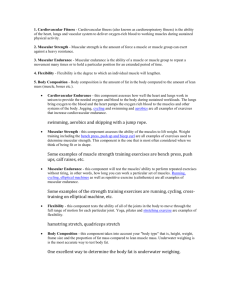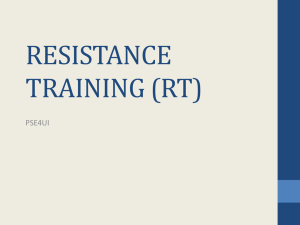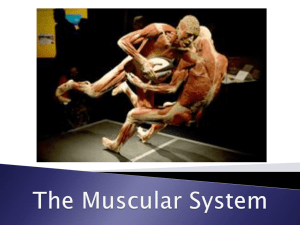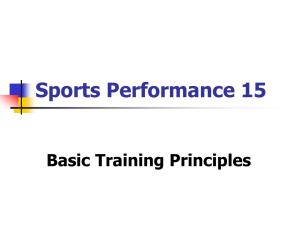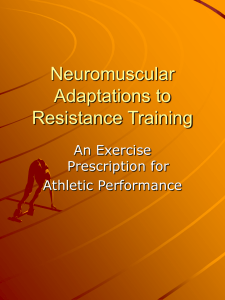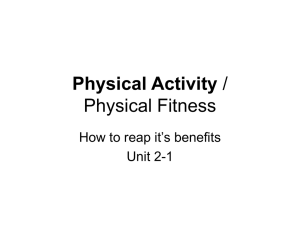Unpacking Outcomes
advertisement
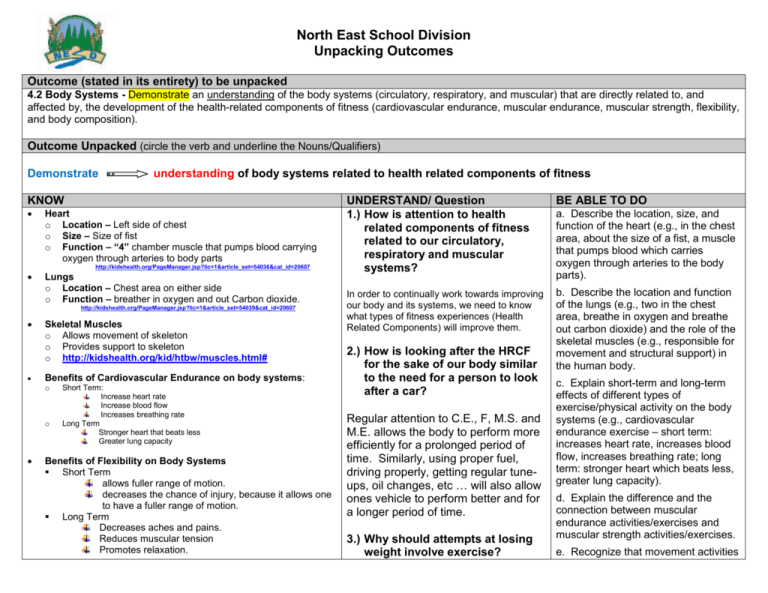
North East School Division Unpacking Outcomes Outcome (stated in its entirety) to be unpacked 4.2 Body Systems - Demonstrate an understanding of the body systems (circulatory, respiratory, and muscular) that are directly related to, and affected by, the development of the health-related components of fitness (cardiovascular endurance, muscular endurance, muscular strength, flexibility, and body composition). Outcome Unpacked (circle the verb and underline the Nouns/Qualifiers) Demonstrate understanding of body systems related to health related components of fitness KNOW Heart o Location – Left side of chest o Size – Size of fist o Function – “4” chamber muscle that pumps blood carrying oxygen through arteries to body parts Lungs o Location – Chest area on either side o Function – breather in oxygen and out Carbon dioxide. http://kidshealth.org/PageManager.jsp?lic=1&article_set=54036&cat_id=20607 http://kidshealth.org/PageManager.jsp?lic=1&article_set=54039&cat_id=20607 Skeletal Muscles o Allows movement of skeleton o Provides support to skeleton o http://kidshealth.org/kid/htbw/muscles.html# o Short Term: Increase heart rate Increase blood flow Increases breathing rate Long Term Stronger heart that beats less Greater lung capacity BE ABLE TO DO In order to continually work towards improving our body and its systems, we need to know what types of fitness experiences (Health Related Components) will improve them. b. Describe the location and function of the lungs (e.g., two in the chest area, breathe in oxygen and breathe out carbon dioxide) and the role of the skeletal muscles (e.g., responsible for movement and structural support) in the human body. 2.) How is looking after the HRCF for the sake of our body similar to the need for a person to look after a car? Benefits of Cardiovascular Endurance on body systems: o UNDERSTAND/ Question 1.) How is attention to health related components of fitness related to our circulatory, respiratory and muscular systems? Benefits of Flexibility on Body Systems Short Term allows fuller range of motion. decreases the chance of injury, because it allows one to have a fuller range of motion. Long Term Decreases aches and pains. Reduces muscular tension Promotes relaxation. Regular attention to C.E., F, M.S. and M.E. allows the body to perform more efficiently for a prolonged period of time. Similarly, using proper fuel, driving properly, getting regular tuneups, oil changes, etc … will also allow ones vehicle to perform better and for a longer period of time. 3.) Why should attempts at losing weight involve exercise? a. Describe the location, size, and function of the heart (e.g., in the chest area, about the size of a fist, a muscle that pumps blood which carries oxygen through arteries to the body parts). c. Explain short-term and long-term effects of different types of exercise/physical activity on the body systems (e.g., cardiovascular endurance exercise – short term: increases heart rate, increases blood flow, increases breathing rate; long term: stronger heart which beats less, greater lung capacity). d. Explain the difference and the connection between muscular endurance activities/exercises and muscular strength activities/exercises. e. Recognize that movement activities Benefits of Muscular Endurance on Body Systems o Short Term Increase heart rate Increase blood flow Increases breathing rate Extended Work out times Increased Metabolism o Long Term Increased Stamina Increased Metabolism Decreased Chance of injury Benefits of Muscular Strength on Body Systems o Short Term Increase heart rate Increase blood flow Increases breathing rate o Increased Metabolism Long Term Better appearance Increased Metabolism Decreased Chance of injury Metabolism - the amount of energy or calories your body burns to maintain vital functions. o Your metabolism is affected by the amount of muscle you have compared to the amount of fat you have on your body. This comparison is important because your muscle tissue burns or uses up more calories to maintain itself than fat does. That being, people who have a lot of muscle on them or mostly muscle on their frame, tend to have a higher metabolism than others who have more fat Muscular Strength vs. Muscular Endurance o Similarities: Both require use of muscular systems o Differences: Muscular strength is the ability of the body to generate force in a short period of time. Relies on anaerobic energy. Uses heavy weight for short period of time (68 reps) Increases size of the muscle and strengthening the connective tissues. Muscular endurance is the ability to sustain muscle contraction over an extended period of time without Exercise burns fat, but also increases metabolism, which allows the body to continue burning calories more easily. Continued exercise will increase the amount of fat burned and metabolic rate while increasing muscle, which will allow overall body appearance to be more toned. that require repeated high demands being placed on the joints, such as lifting heavy weights, are not appropriate for growing bodies and should be avoided until the body muscles are more fully developed, but that simple daily tasks (e.g., carry the groceries home from the store) and lifting light weight in a supervised environment is appropriate. f. Discuss the importance and incorporate the use of light activity and stretching as part of a cool-down following a vigorous activity (e.g., decrease blood flow and body temperature gradually, loosen the muscles). g. Demonstrate, through verbal explanations and/or visual representations, how exercise helps decrease body fat and increase muscle, that fat and muscle are two different components of the body, and that you cannot turn one into the other. fatigue. Relies on aerobic energy Uses moderate weight for a longer time (1015 reps). Muscle size becomes longer and more toned rather than larger. Benefits of Cool Down o Relaxes you mentally and physically o Opportunity to stretch o o Warm muscles tend to shorten to a length less than what they were before the activity = less flexibility. IOW, if a person fails to stretch over time it will result in a permanent shortening of the muscles which means that the person will become more prone to stiffness, soreness and injury. Blood flow will reduce gradually through muscles. Stopping too quickly can cause blood to pool up, which can lead to cramping, stiffness and soreness. Stress on body is reduced if one goes from vigorous activity to a complete stop nausea, dizziness and fainting may occur Exercise can burn enough calories to force the body to burn fat, but it cannot turn fat into muscle. However, certain types of exercise (eg. ab-exercises) can strengthen muscles in an area of excess fat (eg. stomach) and give the appearance of a leaner shape.
